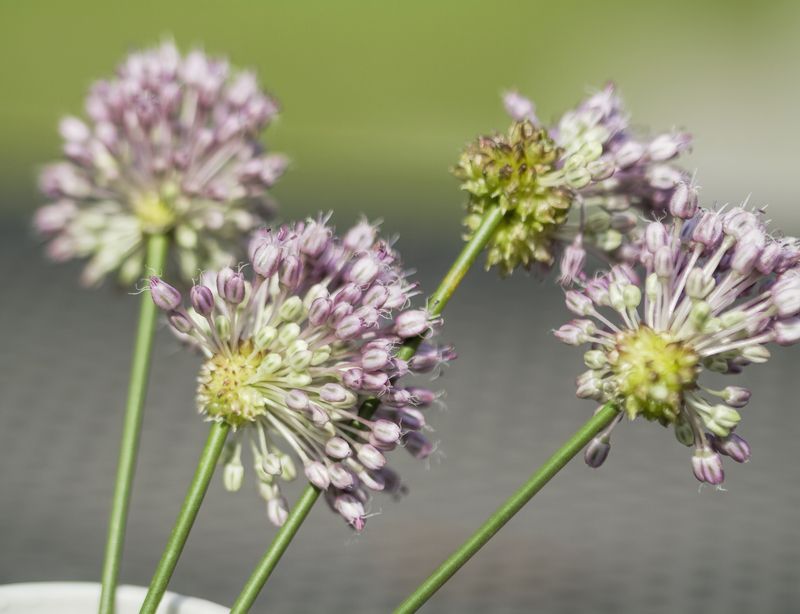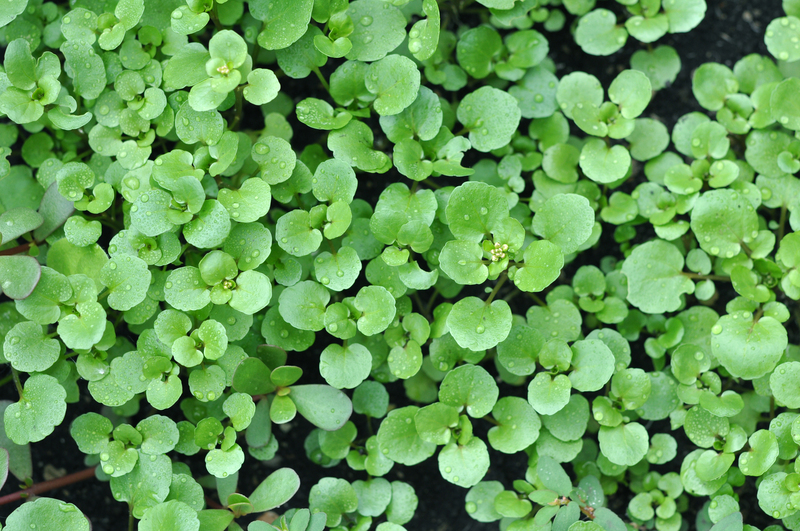Discover How to Nurture Vibrant Orchids
Posted on 30/06/2025
Discover How to Nurture Vibrant Orchids
Orchids are renowned for their unique beauty, captivating blooms, and mystical allure that can instantly elevate the elegance of any home or garden. However, many plant enthusiasts feel intimidated at the thought of orchid care, often believing these stunning flowers are too demanding or complex to maintain. In reality, nurturing vibrant orchids is entirely achievable with the right knowledge, attention, and a few essential orchid cultivation techniques. This comprehensive guide will help you master the art of caring for orchids and ensure your plants not only survive but thrive and flourish with radiant blooms all year round.

Understanding the Basics: What Makes Orchids Unique?
Before delving into the specifics of orchid care, it's important to recognize what sets these exotic plants apart. With over 25,000 species and more than 100,000 hybrids, orchids are among the largest and most diverse families in the plant kingdom. Their remarkable adaptability enables them to flourish in environments from tropical rainforests to arid deserts, but their roots always crave adequate air, water, and nutrition.
- Epiphytic orchids, like Phalaenopsis and Cattleya, grow on trees, absorbing moisture and nutrients from the air and rain.
- Terrestrial orchids grow in soil, often requiring different care than their epiphytic cousins.
The most common houseplant varieties, such as Moth Orchids (Phalaenopsis), are celebrated for their manageable care routines, making them ideal for beginners aiming to nurture vibrant orchid plants.
The Essential Elements of Vibrant Orchid Care
1. The Right Light: The Foundation for Lush Blooms
Light is the single most critical factor in cultivating healthy, vibrant orchids. Most orchids prefer bright, indirect light, which mimics the dappled sun of their native habitats. Direct sunlight can scorch orchid leaves, while too little will result in weak, spindly growth and an absence of flowers.
- Phalaenopsis orchids: Thrive on windowsills with eastern or northern exposure.
- Cattleya and Dendrobium: Require slightly brighter conditions, often near south- or west-facing windows, filtered by sheer curtains.
- Monitor the color of the leaves -- healthy orchids display vibrant green leaves. Yellowing or red-tinged leaves indicate light stress.
Quick Tip: If natural light is limited, consider grow lights designed for orchids. Position the bulbs 12-24 inches above your plants, providing 12-16 hours of gentle light per day.
2. Water Wisely: Balancing Moisture and Air
Proper hydration is crucial yet frequently misunderstood when attempting to nurture orchids at home. Too much water suffocates orchid roots and leads to rot, while too little leaves them parched.
- Watering Frequency: Most orchids need to be watered once a week, but this varies by species and environment.
- Check the Potting Medium: Allow the top third of the growing medium to dry before rewatering. Insert your finger into the pot or use a skewer to check moisture levels.
- Water Properly: Soak the roots thoroughly and let excess water drain out completely. Never let orchids sit in standing water.
- If using tap water, let it stand overnight to dissipate chlorine, or use filtered/rainwater for sensitive orchids.
Underwatering reveals itself through wrinkled, shriveled leaves, while overwatering leads to blackened roots and limp foliage. Fine-tune your watering routine based on your orchid's response and your home's climate.
3. Humidity: Tropical Enchantment at Home
Orchids thrive in environments of 40-70% humidity, mimicking their tropical origins. For those seeking to cultivate radiant orchids indoors, especially in arid or centrally heated spaces, increasing ambient humidity is vital.
- Place orchids on humidity trays -- shallow trays filled with water and pebbles -- ensuring pots rest above, not in, the water.
- Group orchids together or locate them near naturally moist spaces like bathrooms or kitchens.
- Gently mist leaves with a spray bottle, ideally in the morning to prevent fungal issues.
- Consider a small humidifier for reliable year-round moisture.
Avoid soggy conditions, as excessive moisture around leaves and stems invites rot and disease.
4. Temperature: Balancing Day and Night
Most orchid varieties favor daytime temperatures of 70-85?F (21-29?C) and night temperatures around 60-70?F (16-21?C). This slight drop at night is important, as it stimulates healthy flowering and bud formation.
- Troubleshooting: Persistent exposure to temperatures colder or hotter than this range can halt bloom production or damage sensitive leaves.
- Avoid placing orchids near cold drafts, radiators, or heating vents for optimal health.
5. Feeding Orchids: Fertilizer for Flowering
Unlike many garden plants, orchids derive significant nutrients from air and rainwater in the wild. Potted orchids, however, depend on you for nutrition. Fertilizing orchids correctly is essential for lush foliage and abundant flowers.
- Use a balanced, water-soluble orchid fertilizer (e.g., 20-20-20) at half the recommended strength.
- Fertilize every two weeks during active growth (spring and summer), tapering to monthly in autumn and winter.
- Flush pots with clear water monthly to prevent fertilizer salt build-up, which can burn roots.
"Feed weakly, weekly" is a popular mantra -- gentle regular feedings yield consistent, vibrant results.
The Art of Orchid Repotting: Fresh Roots for Flourishing Blooms
Repotting is an often overlooked but crucial aspect of nurturing vibrant orchid plants. Over time, orchid potting mixes break down, becoming compacted and waterlogged, which suffocates roots.
- When to Repot: Every 1-2 years, or when you notice roots creeping out of the pot or the medium decomposing.
- What to Use: Specialized orchid mix (bark, sphagnum moss, perlite, charcoal) allows for proper drainage and airflow.
- How to Repot:
- Gently remove your orchid from its pot, shake off and rinse old medium from roots.
- Trim dead or blackened roots with sterilized scissors.
- Place in a slightly larger, clean pot and fill gaps with fresh orchid mix.
- Water lightly and keep in shaded spot for a week to recover.
Tip: Never repot orchids in regular potting soil -- it retains too much moisture, leading to root rot.
Common Orchid Pests and How to Combat Them
Even the healthiest orchids can encounter pests. Early detection and swift action are key to keeping your plants thriving. Here are the most common invaders and how to treat them:
- Mealybugs: These cottony pests cluster at the base of leaves and on roots. Wipe with rubbing alcohol, or treat severe infestations with insecticidal soap.
- Spider mites: Look for fine webbing on the underside of leaves and stippled leaf surfaces. Increase humidity, rinse leaves, and use neem oil for control.
- Scale insects: Brown or black bumps along stems and leaves. Scrape gently with a soft cloth moistened with alcohol.
- Aphids or thrips: These tiny insects feast on new growth and buds. Wash off with water spray and apply mild insecticidal soap if persistent.
Regular inspections, especially under leaves and at leaf bases, are your best defense against outbreaks.
Orchid Pruning and Maintenance: Keeping Plants Healthy and Cheerful
Routine care beyond watering and feeding is essential to nurture vibrant orchids that bloom repeatedly. Keep your orchids neat and healthy with these strategies:
- Remove spent flower spikes: After blooming, cut the stem above a healthy node to encourage new side shoots, or snip at the base for a rest period.
- Clean leaves regularly: Use a damp, soft cloth to remove dust and maximize photosynthesis.
- Trim yellow or dead leaves: This prevents resource drain and enhances airflow.
- Inspect roots and repot as needed: Healthy roots should be firm and green/silver-white; mushy brown roots signal trouble.
Frequent cleaning and careful pruning improve airflow, prevent disease, and keep your orchids stunningly vibrant and ready to bloom again.
Advanced Tips for Glorious Orchid Blooms
Already have thriving plants and want to unlock even more vibrant orchid flowers? These expert tips help take your orchid care to the next level:
- Mimic native seasons: Some species (e.g., Dendrobium) benefit from a dry, cool rest in winter to trigger prolific spring blooms.
- Pollination tricks: For the adventurous, hand-pollinating your orchids can yield rare and beautiful seed pods.
- Flower support: Use stakes or clips to gently support heavy spikes, preventing breakage and displaying blooms to full effect.
- Trial and error: Take notes on what works best for your environment. Adjust your care rhythm as needed--each home and plant is beautifully unique.

Frequently Asked Questions on Orchid Care
How often should I repot my orchid?
Repot every 1-2 years or when the potting medium decomposes. Watch for roots overflowing the pot or visible breakdown of bark/moss.
Why are my orchid leaves turning yellow?
Yellow leaves can result from overwatering, direct sun exposure, or natural leaf aging. Address the most likely cause based on plant position and watering habits.
Can orchids grow in bathrooms?
Yes! Bathrooms often have higher humidity levels ideal for orchids. Just ensure there's adequate indirect light and avoid prolonged darkness.
How do I get my orchid to bloom again?
Maintain regular care routines -- proper light, cool night temperature drops, and regular fertilizing. Cutting the flower spike above a healthy node after the first bloom can encourage a second flush of flowers in some varieties.
Conclusion: Transform Your Home Into a Lush Orchid Haven
Nurturing vibrant orchids is both a science and an art. By understanding these exquisite plants' unique needs -- from light and water to humidity, feeding, and seasonal rest -- you'll reap the rewards of stunning blooms and healthy foliage year after year. With patience, observation, and a willingness to adjust, even first-timers can enjoy a flourishing collection of vibrant orchid plants that are the envy of any plant lover.
Begin your journey with orchids today: choose a robust starter plant, follow these proven best practices, and soon you'll discover the profound joy that comes from the delicate beauty and radiant color that only well-cared-for orchids can provide. Your home, and your spirits, will bloom ever brighter.

